Introduction
In the fast-paced world of e-commerce, staying ahead of the competition requires a strategic approach to optimizing every aspect of an online store. From enhancing product pages to refining site navigation, boosting site speed, and leveraging SEO, every detail matters. This article delves into actionable strategies to elevate an e-commerce platform's performance.
Practical tips on reducing cart abandonment, building effective email marketing campaigns, and collecting valuable customer feedback will be explored. By implementing these expert recommendations, e-commerce businesses can significantly improve user experience, increase conversion rates, and foster long-term customer loyalty.
Optimize Product Pages
Crafting compelling descriptions for items involves more than simply enumerating attributes. Emphasize the advantages that align with your clients' requirements, clarifying how the item will enhance their lives. For example, Awesome Coffee emphasizes how its plant-based coffee powder boosts energy and enhances daily well-being.
High-quality images are crucial. Use multiple angles and zoomed-in views to provide a comprehensive look at the item. This is especially crucial for items that are used in motion, such as e-bikes, or creative solutions that require a clear demonstration.
Customer reviews and ratings serve as powerful social proof. Show star ratings, the percentage of individuals recommending the item, and the number of reviews prominently. Timberland's item page does this effectively, assuring potential buyers of the item's credibility.
Incorporate a 'Complete the Look' feature or similar cross-selling opportunities to boost sales. For instance, displaying related products like New Balance sneakers can motivate buyers to purchase additional items. Additionally, providing a live chat feature can address any concerns in real-time, enhancing client confidence.
Lastly, don't underestimate the power of a bold and compelling call-to-action (CTA). This button should be prominent and persuasive, making it easy for buyers to proceed with their purchase. As RBC Capital Markets research indicates, components such as a buy now, pay later (BNPL) option can significantly boost conversion rates by 20% to 30%, making it a valuable enhancement to your offerings.
Enhance Site Navigation
Establishing an intuitive navigation framework is essential for improving the shopping experience. Start by organizing your products into clear categories and subcategories, ensuring that each section is easy to access and understand. For instance, companies like JCPenney organize their vast array of products—from clothing to home goods—into distinct sections, making it straightforward for shoppers to locate items swiftly.
Incorporate a robust search bar equipped with autocomplete suggestions to assist users in finding what they need more efficiently. This feature not only saves time but also reduces frustration, as highlighted by the emphasis on accessibility in recent industry articles. Implementing such user-friendly navigation can significantly improve the number of clicks and impressions, ultimately boosting sales.
Additionally, make sure your navigation structure supports accessibility features, such as a 'Skip to Main Content' button for keyboard-only users, as recommended by experts. This enhances the overall user experience, making your site more navigable for all visitors.
By adopting these strategies, you will not only streamline the shopping experience but also see a marked improvement in customer satisfaction and engagement.
Improve Site Speed
To guarantee your website operates at its best, begin by examining its performance with resources such as Google PageSpeed Insights. These tools provide vital insights into key metrics such as First Contentful Paint (FCP) and Time to Interactive (TTI), helping you pinpoint bottlenecks that may be slowing down your site. Effective optimization requires addressing multiple factors, including server response times, resource loading, and network latency.
Enhance loading times by optimizing images, minimizing HTTP requests, and leveraging browser caching. Techniques like minification and compression are crucial, as they reduce the amount of data that needs to be transferred. Hosting content with a CDN can also significantly lower network latency by shortening the distance data has to travel.
A quick-loading website is crucial for user experience and can directly influence your conversion numbers. Studies indicate sites that load in 1 second have conversion rates three times higher than those that load in 5 seconds. By implementing these optimization strategies, you'll not only improve user satisfaction but also boost your search engine rankings, as Google considers page speed a critical factor in its ranking algorithm.
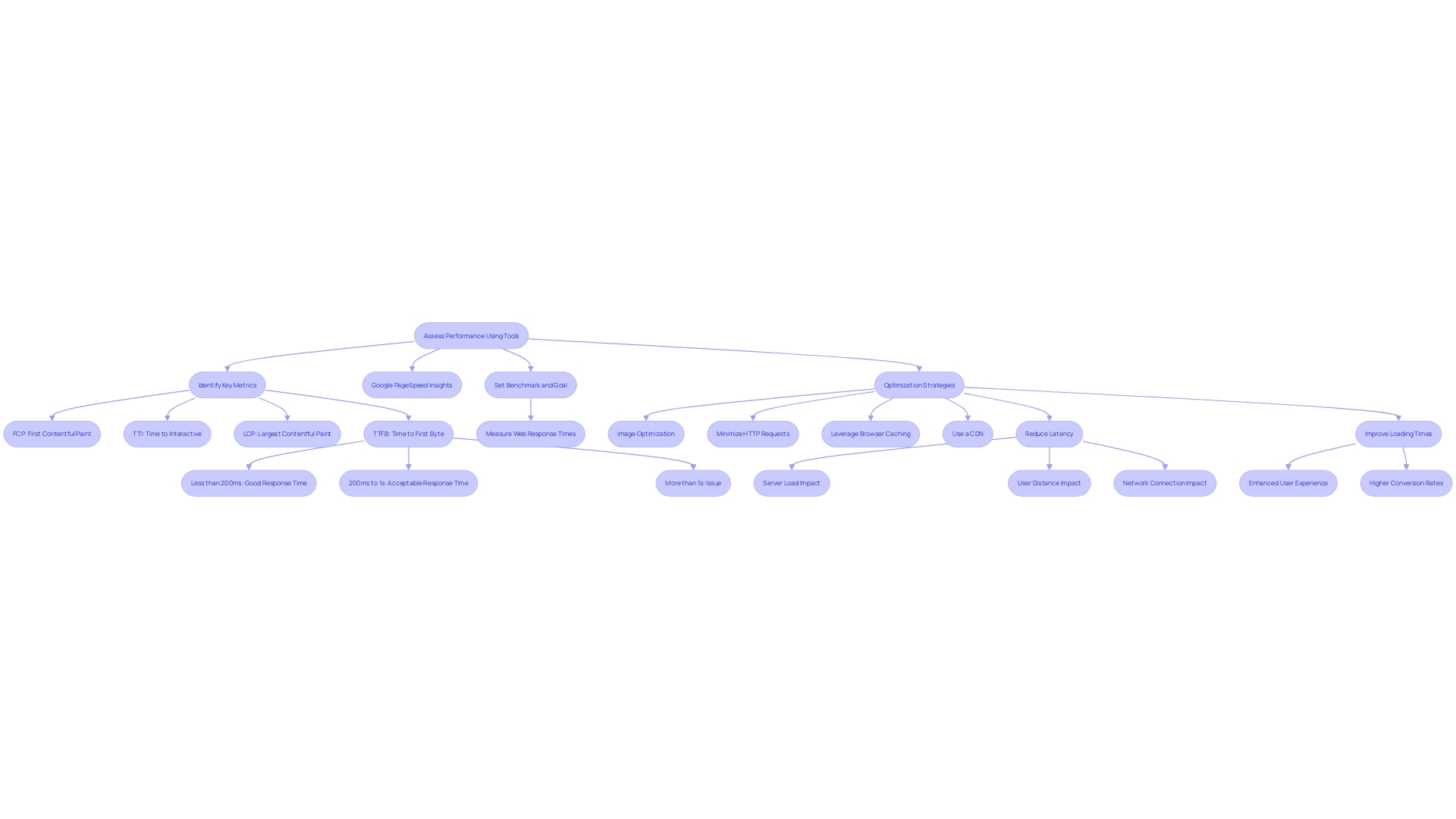
SEO Optimization for E-commerce
Keyword research is the foundation of any successful e-commerce SEO strategy, especially when aiming to stand out in a crowded market. With 93% of online experiences starting with a search engine, comprehending the search phrases your prospective clients utilize is essential. Focus on identifying keywords with high search volume, low ranking difficulty, and high purchase intent. Ensure your product titles, descriptions, and meta tags are optimized with these keywords to improve visibility.
It's not just about keywords, though. Creating a blog or content hub is essential for driving organic traffic and establishing authority in your niche. Consistent, high-quality content that addresses the informational, navigational, commercial, and transactional needs of your audience will help build trust and keep users engaged.
Remember, relying solely on paid ads may yield quick results but lacks long-term impact. Once you stop funding ads, traffic can plummet. Instead, a robust SEO strategy ensures sustained growth, eventually leading to conversions on autopilot. Patience and adherence to SEO best practices will pay off as your site climbs the search engine rankings.
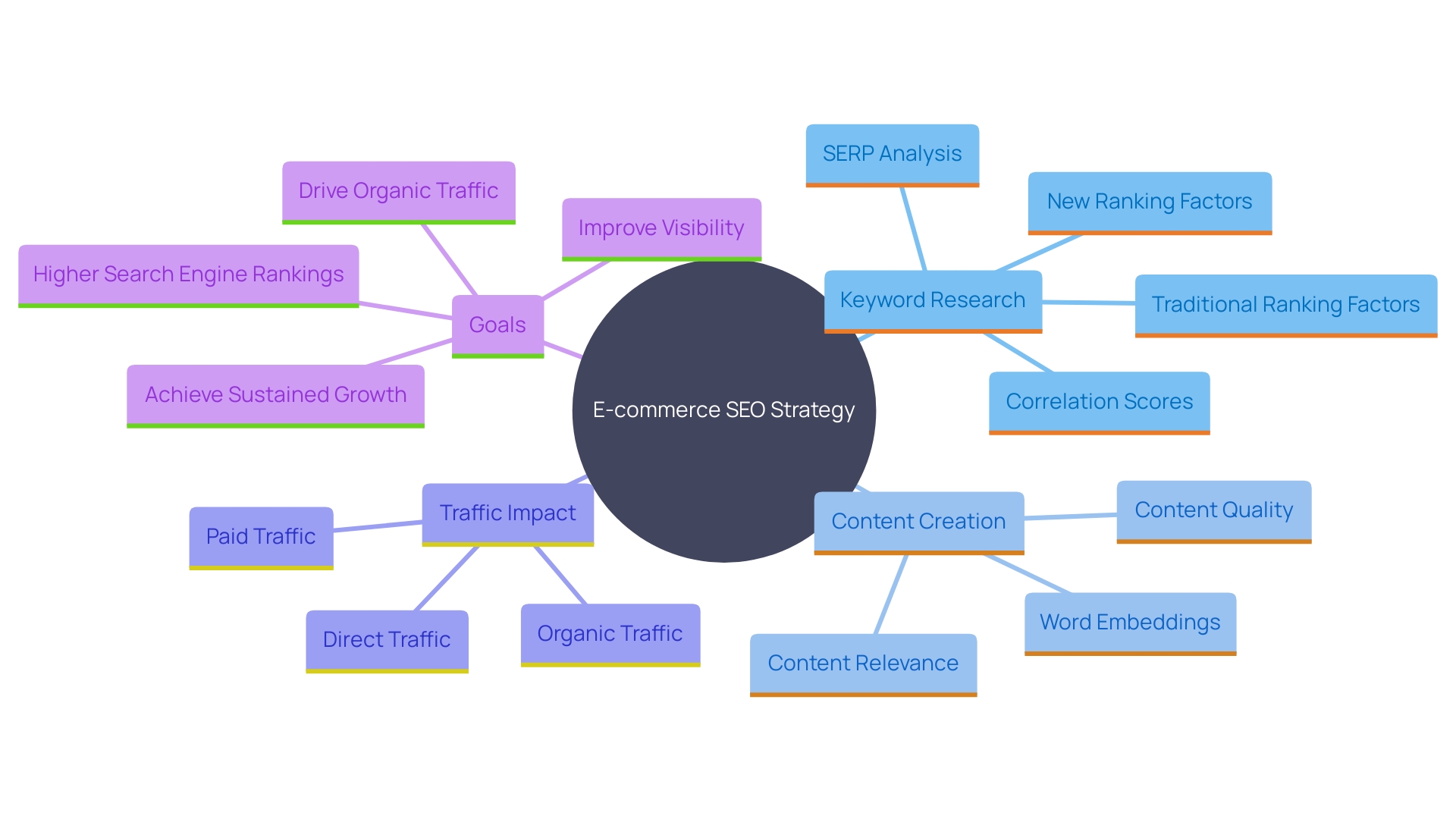
Reduce Cart Abandonment
Implement strategies such as exit-intent popups offering discounts or free shipping to recapture buyers. These tactics can significantly reduce cart abandonment, which has remained stubbornly high at around 70% over the past decade, according to multiple studies by the Baymard Institute. Offering these incentives can convert idle browsers into eager buyers, as evidenced by Cartfuls' success in transforming customer interactions into completed sales.
Simplify the checkout process by minimizing the number of steps required and offering guest checkout options. Research indicates that nearly 18% of online shoppers abandon their carts due to a lengthy and complicated checkout process. Transparent pricing and a variety of payment methods further enhance the checkout experience, instilling trust and encouraging repeat business. By addressing these friction points, e-commerce platforms can reduce the estimated $260 billion loss attributed to poor checkout design, potentially improving conversion rates by up to 35%.
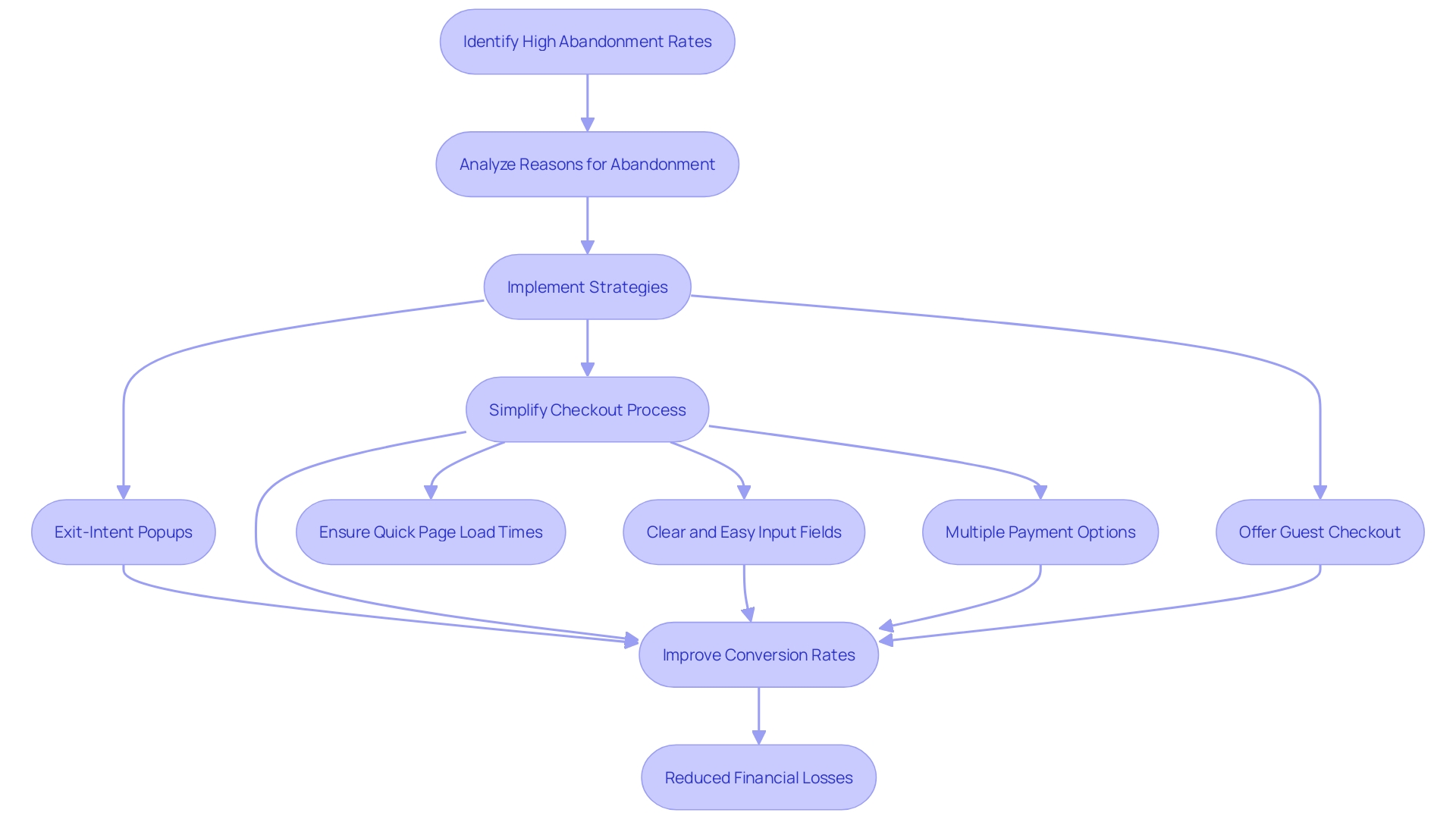
Build and Automate Email Marketing
Leverage email marketing automation tools to segment your audience based on behavior and preferences. This enables the creation of highly targeted campaigns that can effectively nurture leads, promote new products, and re-engage past customers with personalized offers. In 2023, the number of email users worldwide is forecasted to hit 4.37 billion, highlighting the importance of a strategic approach to email marketing. By employing data-informed insights, you can assess key performance indicators (KPIs), such as open percentages and click-through percentages, to continuously enhance your strategy. This method not only encourages loyalty but also enhances conversion levels. For instance, emails with three images or less and about 20 lines of text have been found to achieve the highest click-through rates. By segmenting your audience and personalizing your messaging, your email marketing efforts are more likely to resonate with your recipients, ultimately driving better results.
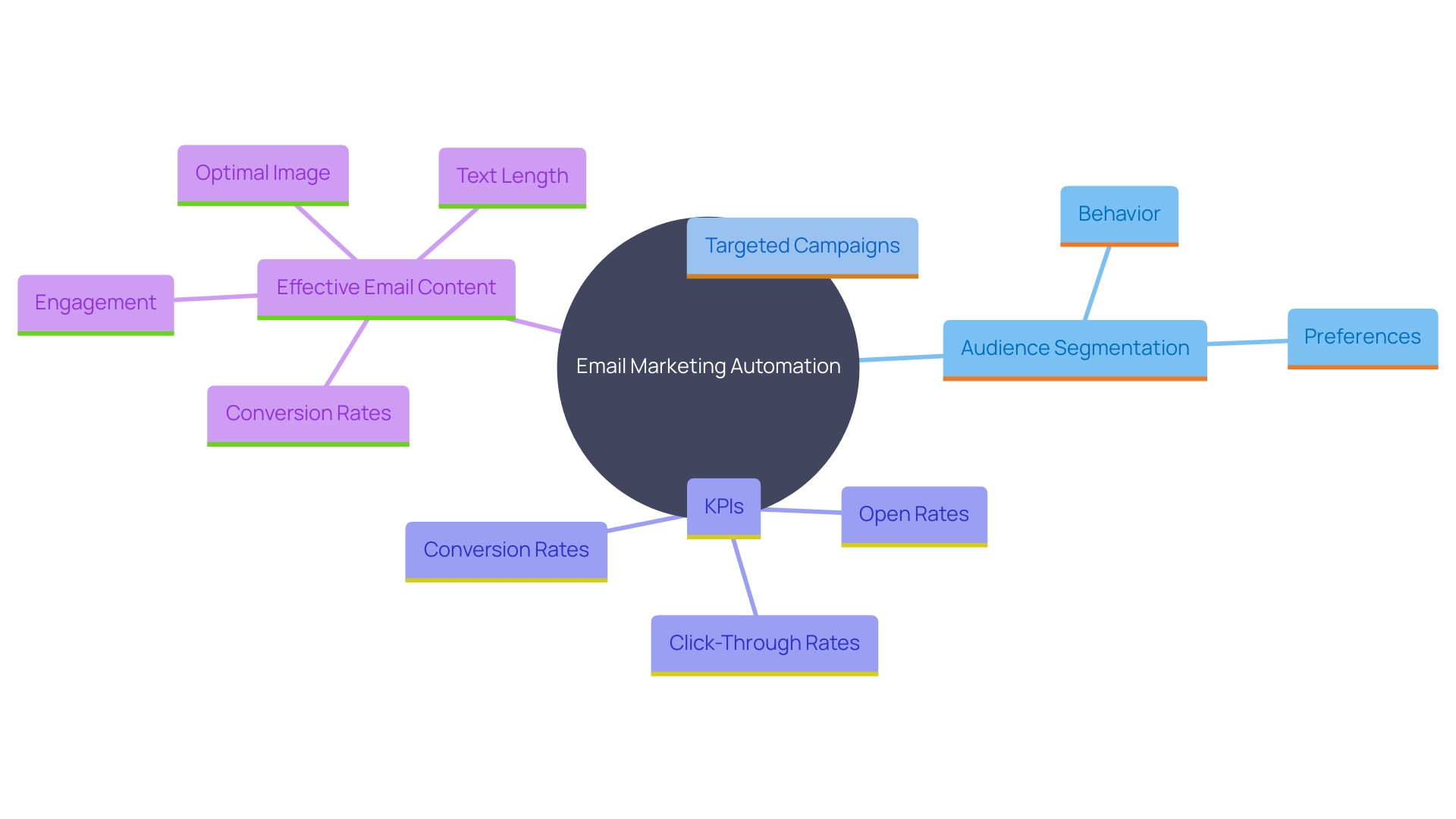
Collect and Analyze Customer Feedback
Utilizing feedback from clients is essential for understanding their preferences, needs, and expectations. Digital resources such as online surveys, feedback forms, and social media listening applications have transformed the manner in which businesses collect insights. These platforms allow for real-time feedback collection, making it easier and more efficient for both customers and businesses.
Once gathered, the feedback should be meticulously examined using sophisticated digital analysis methods. These tools can swiftly process large volumes of data, identifying trends, patterns, and areas requiring improvement. For instance, natural language processing techniques can categorize feedback as positive, negative, or neutral, providing a clear snapshot of user sentiments.
The crucial step lies in acting on these insights. By addressing the identified pain points and enhancing product offerings or services, businesses can foster client loyalty and drive long-term success. Continuous improvement based on feedback not only enhances customer satisfaction but also strengthens the bond between the company and its customers.
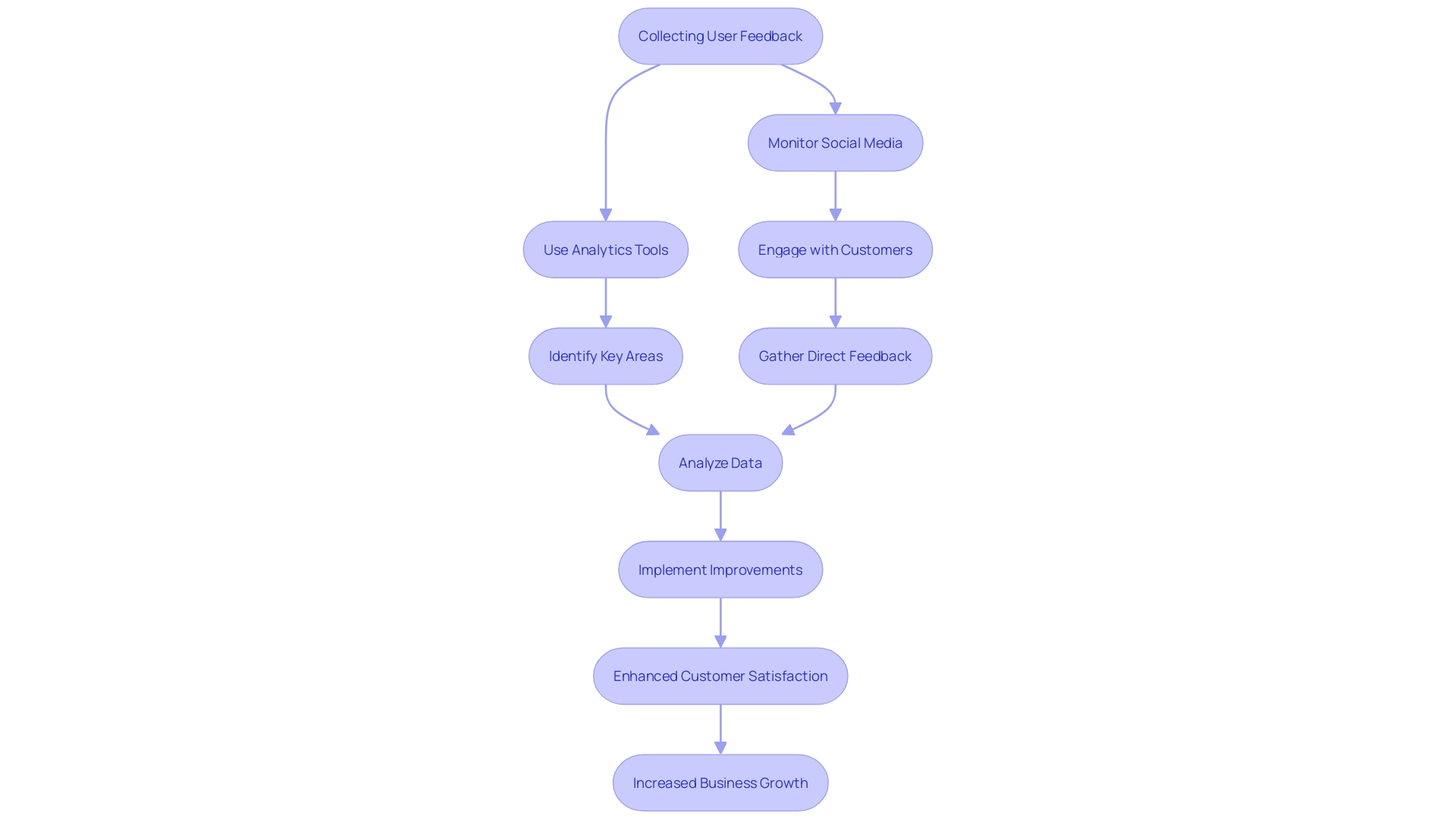
Conclusion
Elevating an e-commerce platform's performance requires a multifaceted approach that addresses various critical aspects. Optimizing product pages through compelling descriptions, high-quality images, and effective customer reviews establishes a strong foundation for attracting and converting visitors. Enhancing site navigation ensures that customers can easily find what they need, while improving site speed directly impacts user experience and conversion rates.
SEO optimization plays a vital role in increasing visibility and driving organic traffic, making it essential to focus on keyword research and content creation. Additionally, reducing cart abandonment through strategic incentives and streamlining the checkout process can significantly boost sales. Implementing automated email marketing campaigns further nurtures customer relationships and fosters loyalty, leading to increased conversions.
Finally, collecting and analyzing customer feedback allows businesses to adapt and improve continuously. By leveraging insights gained from customer interactions, e-commerce platforms can enhance their offerings and strengthen customer loyalty. These actionable strategies form a comprehensive plan for e-commerce success, driving not only immediate results but also long-term growth and customer satisfaction.




